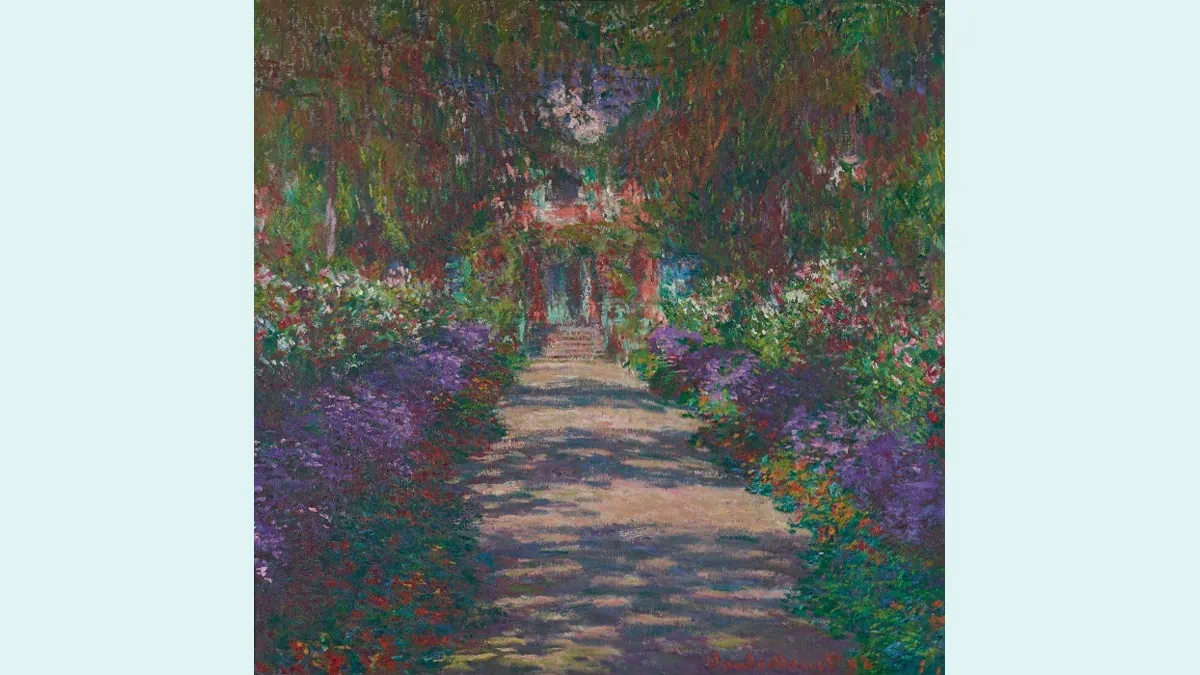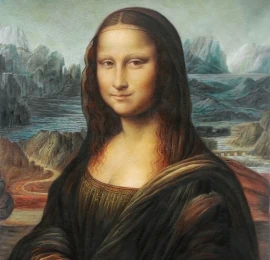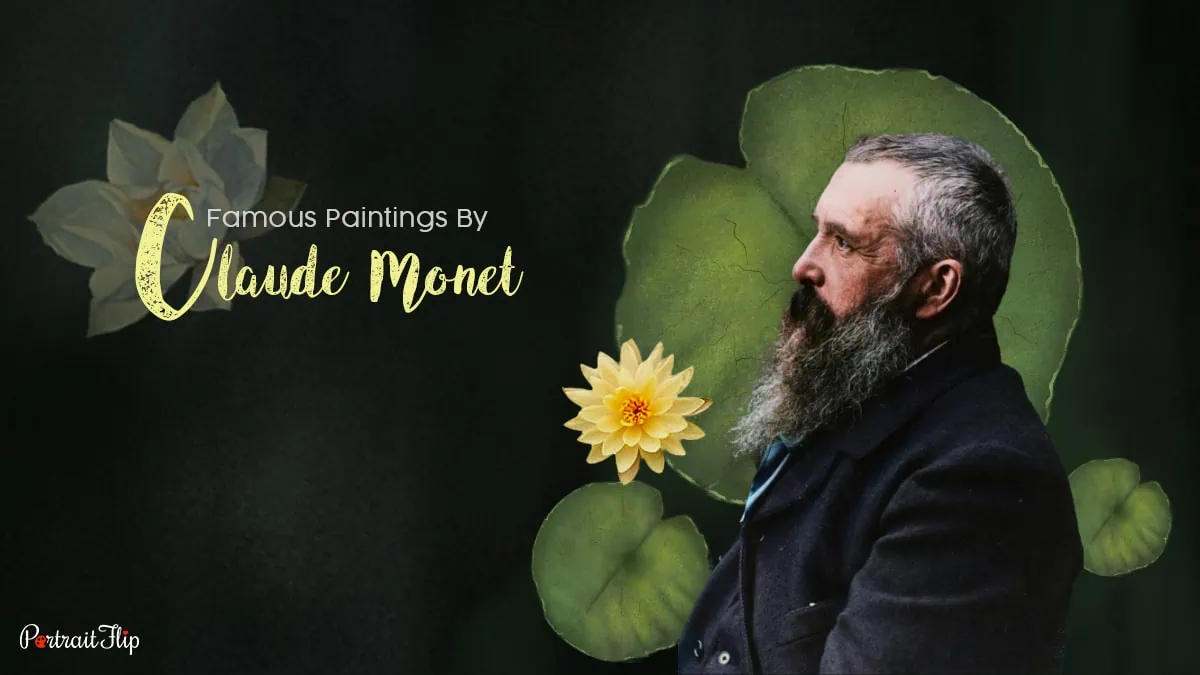Whoever you admire the most in the world of art, you can’t ignore the fact that Claude Monet’s paintings are the most detailed, meticulously-crafted, and meaningful work that has ever been produced.
The harsh truth is that:
Many came… Many left…
Many tried their best to express their lives through art.
But one who succeeded in it was none other than Claude Monet.
Claude Monet, a rare talent, a muse to countless, and the creator of over 2,000 pieces of art, was one of the most respected French painters.
His admiration and keen interest in art were immeasurable. Claude Monet’s paintings were quite meaningful and detailed and were mainly associated with his personal life.
Claude Monet’s paintings had a personal touch and an experience that he had also been part of.
Not only are they worth a million dollars, but they are also the most-talked about.
Today we’re going to talk about 15 Claude Monet’s impressionist paintings that were made in different weather conditions and time periods, and were widely popular in 20th century.
Table of contents
- 15. Jean Monet On His Hobby Horse
- 14. Le Bateau- Atelier
- 13. Woman With A Parasol
- 12. Haystacks
- 11. Garden at Sainte-Adresse
- 10. The Magpie
- 9. Camille (The Woman in the Green Dress)
- 8. Pathway in Monet’s Garden
- 7. Houses of Parliament
- 6. Bain À La Grenouillère
- 5. La Gare Saint-Lazare
- 4. Wild Poppies Near Argenteuil
- 3. San Giorgio Maggiore at Dusk
- 2. Bridge Over A Pond Of Lilies
- 1. Impression, Sunrise
- The Bottom Line:
15. Jean Monet On His Hobby Horse

(Claude Monet painting Jean Monet on his Hobby Horse is currently housed at the Metropolitan Museum of Art in New York.)
This Claude Monet painting shows the thicks and thins of the artist’ life.
As the name suggests, Claude Monet painting features his first child, Jean Monet, who’s riding a three wheel bicycle in the rented garden in Argenteuil, near Paris.
Claude Monet’s painting shows his impeccable skills and knowledge about art.
Did you know Monet suffered hardship after the completion of Jean Monet on his Hobby Horse?
The reason was Prussia’s invasion of Paris, which resulted in the French leaving for nearby countries to seek peace and stability.
Monet painted Jean Monet in order to show the state of his happiness during his stay in Paris.
The Prussian invasion took a toll on Claude Monet’s well-going financial life, which resulted in bankruptcy.
Claude Monet could’ve resurrected his financial stability if he had sold the impressionist painting Jean Monet on His Hobby Horse. However, he chose to keep it himself, as Jean Monet’s artwork was close to his heart.
Claude Monet Giverny painting, featuring his son, was well received by people who attended the exhibition that took place after the artist’s demise.
- Title: Jean Monet on his Hobby Horse
- Date of Creation: 1872
- Location: Metropolitan Museum of Art
(Suggested: 15 Famous Renaissance Artists)
14. Le Bateau- Atelier

(Le Bateau-Atelier, art by Monet, is owned by Barnes Foundation of Pennsylvania.)
There were limited numbers of Claude Monet paintings that featured Monet himself; one of them is Le Bateau-Atelier, which is the most famous Monet boat painting.
It was made in 1876 when Monet moved to Argenteuil with his first family.
That’s when he bought a boat, which was later known to be Claude Monet’s workshop boat.
Claude Monet’s art or boat painting may have a sad and lonely vibe due to its depiction and the background. But in reality, Monet’s sailboat painting is his most favorite art piece, as it was made with the assistance of his first wife, Camille Doncieux.
During the period, Monet’s financial situation was way better than previous years, which is why he was able to buy a boat in one go.
As time went on, he had to move to a different country and leave his boat behind in Argenteuil, a place where Alice (Claude Monet’s second wife) used to stay.
Did you know that the view he portrayed in his artwork was inaccessible to anyone?
After several requests, he received a nod from local authorities, which resulted in the creation of the impressionist art known as Le Bateau-Atelier.
Claude Monet produced a series of paintings of sailing boats that performed well in exhibitions wherever they were displayed.
Fact: Le bateau-atelier is Claude Monet’s painting, literally translated as “The Boat-Workshop.”
Today, the painting belongs to the Barnes Foundation of Philadelphia.
- Title: Le Bateau- Atelier
- Date of Creation: 1876
- Location: Barnes Foundation
Speaking about a boat, it’s no less than a precious thing for some people.
It keeps you safe amidst the roaring waves of the sea. It takes you to your destination without any hindrance. Get your boat painted by us! Capture your best ice-fishing moment and just freeze it forever!
13. Woman With A Parasol

(Claude Monet painting of Modern Art, Woman with a Parasol is currently housed at the National Gallery of Art in Washington, DC.)
Claude Monet’s artwork either features random outdoor scenarios or his family immersed in homely activities; this impressionist work is a combination of both.
It features Claude Monet’s family members (Monet’s son and wife) in an outdoor setting.
His first wife, Camille Monet, and their son, Jean Monet, are taking a stroll in the meadows.
Claude Monet’s painting evokes a pleasing and joyful emotion due to its aesthetics. Claude Monet impressionism art was about his wife and son in bright and sunny weather, and the background of the painting was dominated by distorted clouds and a mesmerizing blue sky.
Did you know “Woman with a Parasol” was labeled a genre painting?
What’s a “genre painting”?
Genre painting is a depiction of everyday activities done by everyday people.
In this best Monet painting, you’ll see Jean and Camille taking a stroll, which is an everyday activity.
It’s Claude Monet’s large oil painting, which was displayed in several art exhibitions. The most revered and recognized Claude Monet painting appeared for the first time in 1876 at the second Impressionist exhibition.
Claude’s painting was close to him as it featured his first family, who witnessed the best time of their lives in Argenteuil.
That thought drove him to produce more canvas or portrait paintings in Argenteuil.
Fact: The owner of Monet’s artwork didn’t sell it but donated it to the National Gallery of Art in Washington, DC, in 1983.
- Title: Woman With A Parasol
- Date of Creation: 1875
- Location: National Gallery of Art
(Also Read: 13 Rembrandt Paintings That Portray His Mastery In Portraits)
12. Haystacks

(Claude Monet’s Six of Haystacks’s 25 paintings are located at the Art Institute of Chicago, Chicago. The rest are housed at different art museums.
Haystacks is a series of Claude Monet’s impressionist paintings, which he created in the period of 7 months (1890-91).
Monet wasn’t a strange person, as you’d think—who on earth would produce 25 paintings of Haystacks?
He was a great painter because he was a phenomenal observer who would view a scene from different angles before drawing it in a certain way, which could unleash new perspectives every time you’d see Claude Monet oil paintings.
Claude Monet’s Haystacks was one such fine impressionist painting that was created under different weather conditions and times.
He drew a stack of wheat, which was from Givernia; in order to add perspective, he used different hues of colors and backgrounds, oftentimes juxtaposing them, as he believed that the effect of the scene differs as you see it at different times.
Haystacks, a series of Claude Monet’s paintings, displays his admiration for nature. It was also one of Monet’s most expensive paintings ever made.
- Title: Haystacks
- Date of Creation: 1890-91
- Location: Art Institute of Chicago, Chicago
(Suggestion: Rothko’s No. 61: Rust & Blue)
11. Garden at Sainte-Adresse

(Garden at Sainte-Adresse, one of Claude Monet masterpieces, is currently housed at the Metropolitan Museum of Art in New York.)
Claude Monet’s painting features his family members chilling in the garden with a fantastic view ahead of them.
A lady at the fence is his cousin’s wife, who’s standing next to her father. Monet’s father is in the foreground, sitting next to his cousin’s wife’s sister, Sophie.
Garden at Sainte Adresse isn’t a complete family portrait, nor is it an impression, although Claude Monet painting techniques have similarities with impressionist art.
It’s a scene from the resort town of Sainte-Adresse near Le Havre (France), where Claude Monet spent his summer of 1867.
Claude Monet’s garden painting is aesthetically pleasing, consisting of human and natural elements, and was created in 1867.
The Monet style of painting usually has an intense and dark element; this Claude Monet work shows the calming effect of natural light on people.
Monet’s composition evidently displays his admiration for bright colors and patterns that looked like Japanese block prints to Monet’s friend, Pierre Auguste Renoir.
He’d even call Garden at Sainte-Adresse a Japanese painting and refer to various Japanese art.
The tone of Claude Monet’s art was a bit positive and jovial compared to Monet’s other works, which are intense and dark.
Some art critics at that point even regarded it as the best painting by Monet, which represents human presence in the landscape.
- Title: Garden at Sainte-Adresse
- Date of Creation: 1867
- Location: Metropolitan Museum of Art, New York
(Also Read: 10 Paintings By Caravaggio)
10. The Magpie

(Claude Monet painting, The Magpie, is currently housed at the Musée d’Orsay, Paris.)
The Magpie is an example of detailed work that is best known as Claude Monet’s snow painting from the late 19th century.
Claude Monet’s famous painting consists of a snow-covered forest somewhere in France, with human traces being the highlighted part.
The snow painting genre wasn’t ever discovered until Monet studied Courbet, whose composition grandly portrays human presence in a snow landscape.
He was the inspiration for Monet’s landscape art, as Courbet was an accomplished painter in the genre not so long ago when Monet began exploring it.
Claude Monet’s painting depicts a magpie perched on a gate, showing his back to the viewer. The weather is chilly as hell, as snow is around each part of the landscape, passing away calm in the chaotic vibe.
Claude Monet’s painting was made in Etretat’s home, arranged by his patron, when he moved to Normandy with his wife, Camille, and newly born son.
As time went on, it appeared in several art exhibitions, including the Salon, and art lovers not only considered it the best landscape painting but also the most famous still life painting.
- Title: The Magpie
- Date of Creation: 1868-69
- Location: Musée d’Orsay
(Also Read: The Mona Lisa Painting)
9. Camille (The Woman in the Green Dress)

(Claude Monet painting, Camille, a.k.a. The Woman in the Green Dress, is owned by the Kunsthalle Bremen, the art museum of Germany,)
Monet’s most gracious portrait, featuring Camille, his first wife, is worth millions of dollars.
Created in 1866, it depicts Camille wearing an emerald green dress; her back is to the viewer, and she has a bun tied with ornaments that extend to her neck.
Camille was the most famous portrait of Claude Monet because of its detailed depiction, marvelous use of brushstrokes, and background.
The artist created liveliness by displaying movements in the fold of the emerald dress and also in the view from the back of the artwork.
Monet would produce several artworks featuring his wife, and in this artwork, his wife was shown immersed in daily activities.
This portrait by Monet was created to show his admiration and respect for his wife, Camille, and was well received by critics at the Paris Salon, where it was exhibited in 1866.
- Title: Camille (The Woman in the Green Dress)
- Date of Creation: 1866
- Location: Kunsthalle Bremen
(Also Read: 12 Surrealist Paintings)
8. Pathway in Monet’s Garden

(Claude Monet painting, Pathway in Monet’s Garden is a part of the collection of the Osterreichische Galerie Belvedere, Austria.)
The garden portrayed in Claude Monet’s painting wasn’t a garden but an abandoned orchard back then when the artist bought a house in Giverny.
In 1883, Claude Monet moved to Giverny, where he lived in a house whose entrance had a dramatic entry surrounded by flowery gardens.
The flowery garden was the result of Monet’s hard work and patience, as it was initially an abandoned orchard.
Monet turned an orchard into a fully grown garden that produced flowers and bushes, which later became a key subject of this artwork.
The mastermind of Impressionism, desired to display his everlasting effort, which he put in, because of which he was able to amplify the charm of Giverny’s house, the place where Claude Monet produced countless paintings, including Pathway in Monet’s Garden.
Monet may have lived in different parts of France, such as Argenteuil, Le Havre, and other parts of North Paris. But he spent half his life in Giverny, which he first saw while traveling by train.
Fact: Pathway in Monet’s Garden is one of Claude Monet’s last paintings (famous artwork).
“Pathway in Monet’s Garden” shows Claude Monet’s skills in painting gardens or lilies.
- Title: Pathway in Monet’s Garden
- Date of Creation: 1902
- Location: Osterreichische Galerie Belvedere, Austria
(Suggestion: 11 Cubist Paintings that are Enigmatic and Controversial)
7. Houses of Parliament

(Claude Monet painting, Houses of Parliament, is currently housed at the Metropolitan Museum of Art)
Claude Monet’s painting was created in France, though half the work was done in England when he stayed in a hotel room on his second visit to the country in 1889.
He returned to London in 1889, having first visited England during the Franco-Prussian War.
Badly hit by the Prussian’ invasion, he had to flee with his family to England in 1870, the time when Claude Monet fell in love with London for the first time.
He returned after a decade and stayed in a rented room in a hotel that had a beautiful view of the Thames River.
It was autumn when Monet decided to draw a painting of the view from his rented room on the sixth floor.
The view from Claude Monet’s place consists of the river Thames and its landmark structures, which comprise Waterloo Bridge and the Charing Cross Bridge.
He drew it but couldn’t complete it. Claude Monet’s bridge painting displays his intense use of brush strokes and a blend of bright colors. He made use of it; perhaps he had to guess the view of it, which was obscured due to fog forming because of climate change.
Monet went back to Giverny, where he resumed the bridge painting work and also produced multiple artworks.
The Cathedral painting by Claude Monet shows the artist’s observation of a static object and its change in appearance due to external factors like drastic shifts in climate.
Claude Monet’s painting wasn’t a detailed one, but surely it was an artwork through which he displayed the beauty of London, which had amazing bridges and cathedrals.
Not only did it receive good reviews from art lovers in France, but it also garnered attention and respect from people who ridiculed it in the first place.
- Title: Houses of Parliament
- Date of Creation: 1902
- Location: Metropolitan Museum of Art
(Also Read: Abstraction of Art: The Struggle For Artist’s Freedom)
6. Bain À La Grenouillère

(Claude Monet painting, Bain À La Grenouillère, is seen at the Metropolitan Museum of Art in New York)
Claude Monet’s painting was created in 1869; during that time, Monet’s best friend, Renoir, and Monet himself were broke and would sell paintings in Bougival, Paris.
Both saw La Grenouillere, and an idea clicked, which resulted in the creation of Bain A La Grenouillère.
Renoir created his own version of Bain À La Grenouillère, whereas Claude Monet created his.
La Grenouillere was nothing but a popular middle-class resort then, consisting of a spa, a floating cafe, and others where anyone could eat, drink, and dance.
Claude Monet’s painting Bain À La Grenouillère shows the exact scenario of the resort, where people are lunching in the cafe and some are strolling along the water’s edge.
Monet created several landscape paintings; they were detailed and earned him a lot of money. However, he wanted to ditch the common landscape subject and incorporate La Grenouillere in his next painting in order to make money.
Perhaps the earlier of Claude Monet’s paintings (Fishing Boats at Sea) didn’t make it to any exhibitions, which is why he desired to produce artwork that people could resonate with and eventually bring in some money.
The Claude Monet painting with boats was created in 1869 and performed well after its acquisition by the owner of La Grenouillere himself.
Heavy brushstrokes, the juxtaposition of people, and unmixed colors produce a shimmering effect on the lake, which truly displays the essence of La Grenouillere’s scene.
(Fact: Claude’s Bain À La Grenouillère performed way better than Renoir’s Bain À La Grenouillère, as both took inspiration from the same scenario.)
- Title: Bain à la Grenouillère
- Date of Creation: 1869
- Location: Metropolitan Museum of Art in New York
Suggested Read: Paintings by Picasso
5. La Gare Saint-Lazare

(Claude Monet painting, La Gare Saint-Lazare, is housed at the Musée d’Orsay, Paris, France.)
La Gare Saint-Lazare, created in 1877, is one of the oldest of Claude Monet’s paintings.
Gare Saint-Lazare, a railway station in France, was a subject for many impressionist artists, including Manet, Renoir, and Monet.
However, Claude Monet’s paintings’ viewpoints were different from the rest, which could be evidently seen in La Gare Saint-Lazare.
Claud Monet train station painting was something that was interesting to other prominent artists.
He’d use thick brush strokes to obscure the human figures, which weren’t common in Impressionism because it was about leisure activities.
He drew a scenario from the terminus, Gare Saint Lazare, in Paris, which gave a different perspective.
Other famous painters would prefer drawing people boarding and deboarding the train or waiting for the arrival of travel.
Claude Monet chose to draw a halted train whose view is partially covered by smoke, and neither people nor scenes around the train are vividly shaped.
Claude Monet wanted to shift his style of painting into modern life, which is why he decided to draw a train station.
The authorities then sanctioned the permission, and Claude continued the work, producing a series of train paintings.
He managed to draw them at the same time, and some of them are currently housed in prominent art museums, whereas other paintings by Monet are located in other undisclosed places.
- Title: La Gare Saint-Lazare
- Date of Creation: 1877
- Location: Musée d’Orsay, Paris, France
(Suggestions: 13 Mexican Artists)
4. Wild Poppies Near Argenteuil

(The most famous Claude Monet painting, Wild Poppies Near Argenteuil, is located at the Musee d’Orsay in Paris, France.)
After moving to Argenteuil from the United Kingdom, Claude Monet created several artworks, including Wild Poppies Near Argenteuil, popularly known as Monet’s Poppy Field Painting.
He’d spent six years in Argenteuil and drawn several landscapes, seascapes, and cityscapes despite his wife’s ailing health.
Paul Durand, a popular art dealer from Claude Monet’s period, aided him throughout the process.
Monet’s popular poppy field art was made in 1873 and was well-received by art critics and art lovers at the first Impressionist exhibition of 1874.
Claude Monet’s poppy field painting depicts a lady and child, who are reportedly his wife, Camille, and son, Jean. They are leisurely walking, facing the viewer, with grassy surroundings on their right and a section of poppy flowers on their left.
Claude Monet’s flower painting shows them walking across the poppy, away from trees, on the pretext of enjoying the summer.
There’s a dominance of red, yellow, and green in the foreground, as the impressionist artist wanted to display flowers and bushes that naturally and beautifully bloomed in the summer.
Claude Monet’s Argenteuil painting defines the artist’s emotional and mental state as he drew his wife and son in bliss.
- Title: Wild Poppies Near Argenteuil
- Date of Creation: 1873
- Location: Musee d’Orsay in Paris, France
3. San Giorgio Maggiore at Dusk

(Claude Monet painting, San Giorgio Maggiore at Dusk, is owned by the National Museum Cardiff.)
This Claude Monet seascape painting didn’t set big standards like Claude Monet’s Water Lilies paintings and Haystacks paintings did. Created in 1908, San Giorgio Maggiore at Dusk was made in Venice and Giverny.
Claude Monet toured Venice with his second wife, Alice, in 1908, and that’s when he fell in love with the city, which has marvelous seas and mountains.
The depiction in Claude’ Monet’s painting was the view from his hotel room window, where they stayed.
Claude Monet’s painting depicts the island of San Giorgio Maggiore, highlighting the light and colors that appeared due to the sunset.
Monet beautifully painted the silhouette of the island, keeping its surroundings in mind. His expertise in using thin brush strokes and mixed colors creates a sense of movement on the island.
As a matter of fact, Claude Monet painted it in an outdoor setting, just like he did for other impressionist landscape art pieces.
Claude Monet wanted to display the beauty of Venice through art, but he couldn’t explain the charm due to limited opportunities on canvas.
However, the view from his stay was something magical that he couldn’t resist himself, and he drew meaningful artwork whose half was made in Venice and the other half was created in Giverny.
- Title: San Giorgio Maggiore at Dusk
- Date of Creation: 1908-12
- Location: National Museum Cardiff
(Suggestions: 13 Famous Artists of Japan)
2. Bridge Over A Pond Of Lilies

(Claude Monet bridge painting, Bridge Over a Pond of Lilies, is currently housed at the Metropolitan Museum of Art in New York.)
Claude Monet’s painting, Bridge Over a Pond of Lilies, is from his series “Water Lily Paintings”, which was his last project commissioned by his beloved friend and former Prime Minister of France, Clemenceau.
Clemenceau didn’t approach Claude Monet because he was his old friend. He approached him because they used to share similar ideologies and faiths in certain aspects of life.
Both knew how powerful art can be and how it can influence a large chunk of people.
In 1893, Claude Monet purchased land near his residence in Giverny, which has a small pond. There was a bridge over a lake too, which later became the key subject of this famous Monet painting.
As the name suggests, Monet’s art features a bridge over a lake covered with lily foliage, partially hiding the reflection of the sky.
The foreground shimmers as the light falls on the lake, which also gives off a calm and tranquil vibe.
As a viewer, you’ll feel a sense of calm and relaxation as the Claude painting beautifully depicts Giverny’s environment.
The vegetation in the background, the lake, and the bridge in the foreground show Claude Monet’s love for outdoor art.
(Fact: Bridge Over a Pond of Lillies is one of the most celebrated “Water Lily” paintings and is worth $84.6 million.)
- Title: Bridge Over A Pond Of Lilies
- Date of Creation: 1899
- Location: Metropolitan Museum of Art in New York
1. Impression, Sunrise

(The most famous Monet painting, Impression Sunrise, is widely known as Claude Monet’s port painting, which was created in 1872.)
The port in Monet’s Impression Sunrise was from Le Havre, Monet’s hometown, and the view in the painting was from his hometown house.
He found it fascinating and thought of bringing it into his painting by including ships in the middle ground and the sun.
In the entire career of Claude Monet, he never stuck to any pattern or style and chose to pick up techniques that set some standards. In this impression art style painting, Claude Monet used loose brush strokes to highlight the scene.
The defeat of France in the Franco-Prussian War of 1870-71, resulted in the creation of Monet’s sunrise painting called “Impression, Sunrise”.
Not only did he create a single piece of port art, but he created six artworks during different time periods such as dark, day, dusk, and dawn.
Art collectors and critics ridiculed him for his impressionist art pieces, as their opinions were contrary to Monet’s ideas.
Monet was looked down upon for months, and the art critic Leroy even criticized him with the harsh words, “Impression—I was certain of it.” I was just telling myself that, since I was impressed, there had to be some impression in it… and what freedom, what ease of workmanship! “Wallpaper in its embryonic state is more finished than that seascape.”
However, Impression Sunrise by Claude Monet, which depicted the thriving port of Le Havre, post-war, received praise and love from the art exhibitions where it was displayed. It made it to Salon as well, which shut down the voices of those who tried to ridicule Monet’s Impressionist Sunrise.
Impression, Sunrise is Claude Monet’s famous painting and intense art and one can sense it through its depictions as the aftermath of the Franco-Prussian War is evidently displayed.
You can also have a replica of Impression Sunrise made by experts to upgrade the look of your space.
Let everyone know how crazy of an art lover you are!
- Title: Impression, Sunrise
- Date of Creation: 1872
- Location: Musée Marmottan Monet, Paris
The Bottom Line:
Claude Monet, a prolific painter from France, produced most of his paintings in different parts of the country, including Argentueil, Giverny, and Bougival.
Monet was someone who would create a series of paintings instead of producing a single piece of art.
Each painting by Claude Monet showcases the artist’s good and bad days. But these are the paintings responsible for changing his trajectory.
By exhibiting and selling some of these impressionist artworks, he made a huge amount of money, which he used to construct his own house in Argenteuil.
Claude Monet’s paintings, such as Camille, Haystacks, and Impression Sunrise, received appreciation and recognition across the world and are the most expensive pieces of art.
Today, you can see Claude Monet’s paintings in various art museums and galleries. Some of his paintings are at the Louvre Museum as well.
If given a chance, I’m sure you’d enjoy adding one of them to the walls of your living room.
But you don’t have millions of dollars to buy one?
Then look no further; you can have any of these Claude Monet paintings reproduced by our professional artists and improve the decor of your house without breaking the bank.
Hello art lovers,
Thank you for reading this blog about Claude Monet’s paintings all the way.
If you would like to add something, then feel free to use the comment section below.
Also, don’t forget to check out our YouTube channel and give us a follow on our Instagram page.
If this caught your eye, make sure to check out our blog page, where we post cool art content daily!
Frequently Asked Questions
Claude Monet was known for his famous beach paintings and intense artwork.
The supremely talented French artist produced nearly 2,000 pieces of art in his lifetime; some of them depict Claude Monet’s struggle, hardship, joy, and an ample array of emotions and learnings.
Cathedrals, haystacks, and poplars were commonly used in Claude Monet’s most famous paintings
Jean Monet On His Hobby Horse was one of the most famous and meaningful Claude Monet paintings.
Genre painting is a depiction of everyday activities done by everyday people. Monet’s painting, Woman With A Parasol belonged to the genre painting as it depicted Jean and Camille taking a stroll, which is an everyday activity.
Haystacks was one of Claude Monet’s most expensive paintings.
Camille (The Woman in the Green Dress) is Claude Monet’s artwork featuring his first wife.
Claude Monet’s painting, Houses of Parliament, is currently housed at the Metropolitan Museum of Art.
La Gare Saint-Lazare, created in 1877, is the most famous piece in Claude Monet’s train paintings.






